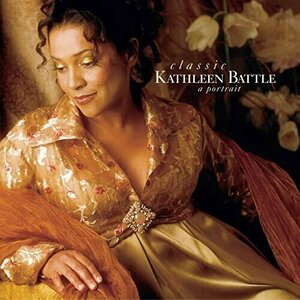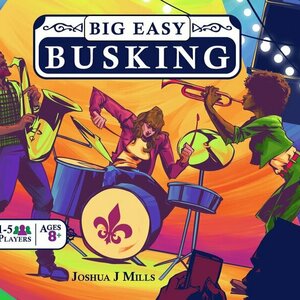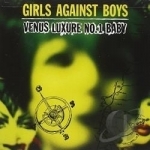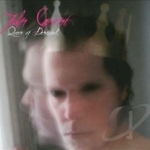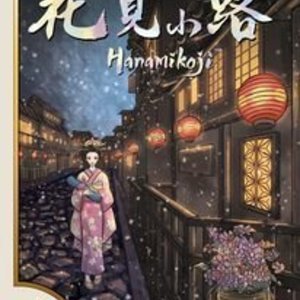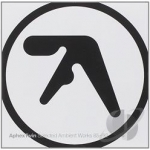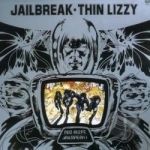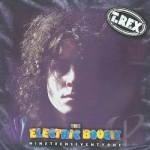Search
Search results
Faris Badwan recommended track Eternal Source of Light by Kathleen Battle in Classic Kathleen Battle by Kathleen Battle in Music (curated)
Purple Phoenix Games (2266 KP) rated Big Easy Busking in Tabletop Games
Sep 15, 2020
Ahh New Orleans. If there ever was a city I NEED to revisit, it’s New Orleans. I love nearly everything about it. The history, the art and music, the architecture, and strolling down Frenchman Street at night listening to the hottest music I’ve ever heard live. But what is it like to BE a musician in NOLA? Or even a group’s manager? Well, I’ve never played in New Orleans (I am a professional trumpet player – don’t belive me? Check out the last photo in this review to see my axe and the box as proof), but I can imagine how it would go. Does Big Easy Busking capture the feeling? Let’s find out together.
Big Easy Busking is a card-based area control game with a sweet sweet music theme. Players will be taking turns learning charts, playing charts, and transferring energy from the musicians to the crowd and back. The winner of Big Easy Busking is the player who can score the biggest haul in tips for the weekend to become the hottest band in town.
DISCLAIMER: We were provided a copy of this game for the purposes of this review. This is a retail copy of the game, so what you see in these photos is exactly what would be received in your box. I do not intend to cover every single rule included in the rulebook, but will describe the overall game flow and major rule set so that our readers may get a sense of how the game plays. For more in depth rules, you may purchase a copy online or from your FLGS. -T
To setup, two “streets” in New Orleans will need to be populated with song cards, both standards and learnable tunes. Crowd cards will be placed under the streets to depict certain crowds and what the moods of those crowds are. Each player will receive some starting bread (money for those not in the biz), energy for their 3-piece band of sax, trumpet, and drums, a starting set list of three tunes, and a reference card that has nothing to do with the metaphor. Decide who can play the highest note (if you are all trumpet players) and the gig may begin!
A turn is broken down into a few different parts. The first thing to be done on a turn is to finish playing the song that had been started in the previous round. Obviously you need to START playing a song to be able to finish, so the primary phase of the turn would be to either learn a song from the song offer or start playing a song from those dealt during setup. To play a song, players will choose a song card, place it under a crowd card (hopefully matching their mood: masks, hearts, beads, fleur-de-lis), gather the required energy from the musicians appropriately, and add those energy cubes to the song card.
After a song is started or learned, the player’s turn is over. On the next turn the player will finish playing the song by moving the spent energy to the crowd in full and taking $1 or moving some of the energy to the crowd and some back to their band members to be used on future songs.
The middle step in a turn (yes, I know I am explaining it out of order, but you do have to start playing a song before you can finish it) is to optionally tip your band members by trading in money for energy at a 1:1 ratio.
Once all players have used up their energy cubes or simply wish to, they will announce that they are “taking a break.” In other words, they pass for the remainder of the round. As the last player takes their break the end of round activities begin. Printed on each crowd card are two important icons: payout amounts for majority of energy and payout amounts for energy reaching the threshold. Resolving each crowd card will determine the players that hold majority or shared majority in each crowd location. For the majority holders payouts will reflect what is printed on the upper left of the crowd card. The upper right of the crowd card displays the number of energy needed upon it to meet the threshold in order to be paid the amount shown. When all crowd cards have been scored players will setup for the next night (round) per the rules. Play continues in this way over three rounds with the winner being the player at the end of the game with the most money.
Components. This is a smaller box (not exactly the same size, but think Tiny Epic), but it is packed with some really amazing bits. First off, as you can tell from the photos the art and color palette used here is simply phenomenal. I absolutely love the color scheme and the art certainly reminds me of some paintings we purchased from an artist on Jackson Square last time we were able to visit. The cards are nice, but I think I will want to sleeve them eventually as I had them in my hands the whole game. The cardboard money and mood tokens are fine, and the wooden cubes reflect the colorful nature of this little gem. All in all, exactly what I would expect from components in a Weird Giraffe Games production. Stellar (see what I did there, Carla?).
I have not really enjoyed a ton of area control games in my gaming history. So this came as a little bit of a shock as I truly loved playing this game. Even the solo rules are engaging and DIFFICULT to win. I came close though – within $1. The game is super quick as you are trying to please the crowds and their distinct moods with your best charts, but having to be mindful of not overextending your musicians lest they be too exhausted to give you the gas when you need it. THAT part resonates with me personally. Being a musician myself, I can tell you that crowds that are into a tune or a band and give them all the energy they have will be rewarded with even more from the band. I definitely give it more when the crowd digs what we’re laying down.
In any case, this is a game review, not a nostalgic trip down my musical memory lane. But then again, a little card game just brought me back wonderful memories of my band, and of visiting New Orleans, and of the joy of live music. Does Big Easy Busking completely mimic what it’s like to be a musician? Well, no, I can’t imagine how any game truly could, but it certainly shows the cyclical nature of energy being exchanged between musicians and appreciative crowds. Oh, the names of the tunes are also pretty funny on some. This all said, I super love this game and will be kicking out something in my collection to make room for it. If you are needing a smaller card game that you can bring out with musicians or non-musicians that appreciate the theme but also want to start introducing area control in a more accessible form, please do check out Big Easy Busking. Purple Phoenix Games gives it a good-for-the-soul 10 / 12. Maybe once I get into video I will do a Dan King (Game Boy Geek) serenade for Big Easy Busking as it travels into my collection.
Big Easy Busking is a card-based area control game with a sweet sweet music theme. Players will be taking turns learning charts, playing charts, and transferring energy from the musicians to the crowd and back. The winner of Big Easy Busking is the player who can score the biggest haul in tips for the weekend to become the hottest band in town.
DISCLAIMER: We were provided a copy of this game for the purposes of this review. This is a retail copy of the game, so what you see in these photos is exactly what would be received in your box. I do not intend to cover every single rule included in the rulebook, but will describe the overall game flow and major rule set so that our readers may get a sense of how the game plays. For more in depth rules, you may purchase a copy online or from your FLGS. -T
To setup, two “streets” in New Orleans will need to be populated with song cards, both standards and learnable tunes. Crowd cards will be placed under the streets to depict certain crowds and what the moods of those crowds are. Each player will receive some starting bread (money for those not in the biz), energy for their 3-piece band of sax, trumpet, and drums, a starting set list of three tunes, and a reference card that has nothing to do with the metaphor. Decide who can play the highest note (if you are all trumpet players) and the gig may begin!
A turn is broken down into a few different parts. The first thing to be done on a turn is to finish playing the song that had been started in the previous round. Obviously you need to START playing a song to be able to finish, so the primary phase of the turn would be to either learn a song from the song offer or start playing a song from those dealt during setup. To play a song, players will choose a song card, place it under a crowd card (hopefully matching their mood: masks, hearts, beads, fleur-de-lis), gather the required energy from the musicians appropriately, and add those energy cubes to the song card.
After a song is started or learned, the player’s turn is over. On the next turn the player will finish playing the song by moving the spent energy to the crowd in full and taking $1 or moving some of the energy to the crowd and some back to their band members to be used on future songs.
The middle step in a turn (yes, I know I am explaining it out of order, but you do have to start playing a song before you can finish it) is to optionally tip your band members by trading in money for energy at a 1:1 ratio.
Once all players have used up their energy cubes or simply wish to, they will announce that they are “taking a break.” In other words, they pass for the remainder of the round. As the last player takes their break the end of round activities begin. Printed on each crowd card are two important icons: payout amounts for majority of energy and payout amounts for energy reaching the threshold. Resolving each crowd card will determine the players that hold majority or shared majority in each crowd location. For the majority holders payouts will reflect what is printed on the upper left of the crowd card. The upper right of the crowd card displays the number of energy needed upon it to meet the threshold in order to be paid the amount shown. When all crowd cards have been scored players will setup for the next night (round) per the rules. Play continues in this way over three rounds with the winner being the player at the end of the game with the most money.
Components. This is a smaller box (not exactly the same size, but think Tiny Epic), but it is packed with some really amazing bits. First off, as you can tell from the photos the art and color palette used here is simply phenomenal. I absolutely love the color scheme and the art certainly reminds me of some paintings we purchased from an artist on Jackson Square last time we were able to visit. The cards are nice, but I think I will want to sleeve them eventually as I had them in my hands the whole game. The cardboard money and mood tokens are fine, and the wooden cubes reflect the colorful nature of this little gem. All in all, exactly what I would expect from components in a Weird Giraffe Games production. Stellar (see what I did there, Carla?).
I have not really enjoyed a ton of area control games in my gaming history. So this came as a little bit of a shock as I truly loved playing this game. Even the solo rules are engaging and DIFFICULT to win. I came close though – within $1. The game is super quick as you are trying to please the crowds and their distinct moods with your best charts, but having to be mindful of not overextending your musicians lest they be too exhausted to give you the gas when you need it. THAT part resonates with me personally. Being a musician myself, I can tell you that crowds that are into a tune or a band and give them all the energy they have will be rewarded with even more from the band. I definitely give it more when the crowd digs what we’re laying down.
In any case, this is a game review, not a nostalgic trip down my musical memory lane. But then again, a little card game just brought me back wonderful memories of my band, and of visiting New Orleans, and of the joy of live music. Does Big Easy Busking completely mimic what it’s like to be a musician? Well, no, I can’t imagine how any game truly could, but it certainly shows the cyclical nature of energy being exchanged between musicians and appreciative crowds. Oh, the names of the tunes are also pretty funny on some. This all said, I super love this game and will be kicking out something in my collection to make room for it. If you are needing a smaller card game that you can bring out with musicians or non-musicians that appreciate the theme but also want to start introducing area control in a more accessible form, please do check out Big Easy Busking. Purple Phoenix Games gives it a good-for-the-soul 10 / 12. Maybe once I get into video I will do a Dan King (Game Boy Geek) serenade for Big Easy Busking as it travels into my collection.
Sophia (Bookwyrming Thoughts) (530 KP) rated Black Bird of the Gallows in Books
Jan 23, 2020
<b><i>The author/publisher provided a free copy of the book for review purposes - thank you! Receiving a review copy does not guarantee a positive review and therefore do not affect the opinion or content of the review.</i></b>
"I'm going to sleep!” says reviewer, as she furiously types on the keyboard. The next time she looks up, an hour has passed, leaving her with one less hour of sleep and an 8 am class looming closer.
Obviously, I am a complete night owl because all of my decent reviews (aka my usual self and not some half hearted attempt of I THINK THIS IS A REVIEW BUT MY BRAIN IS CRYING SO I GIVE UP *presses schedule*) are all written after all the other souls in the house are sleeping soundly.
<b>There's only one other soul 99% of the time.</b>
Also, I read this weeks ago and completely forgot about the release date being last week, so I started writing other reviews and reading other books and poor Meg Kassel’s debut just sat there crying at me silently, “Are you going to review me?”
<h3 style="text-align: center;"><b>Five Things about Black Bird of the Gallows</b></h3>
At the same time, I had high expectations for Kassel’s debut novel, I also didn't, for some weird and odd reason my brain won't conjure up (the brain is strange, very strange). Here are some things to be aware of before/when picking up the book:
<b>Death is a theme, but used differently </b>- the few novels I've read with a death theme always have something in common: there's probably a grim reaper, and the grim reaper collects souls. Kassel uses a similar theme, but <b>it's not the exact same theme</b>. Honestly, I'm curious if this has mythology ties - is it okay if I kind of regret dropping myth and folklore senior year? I sacrificed it for college credit in speech instead (that's okay, right?).
<b>I am in love with gorgeous lines, and Kassel delivers</b> - I mean, they're not enough that I want to <i>draw </i>them (this is a rare thing to happen), but there are lovely lines and descriptions! And there's humor. I think I enjoyed the humor more often.
<blockquote class="tr_bq">Suddenly, I notice the light steam coming off his skin—the same coming from my mouth when I speak. It feels like I’m sitting next to an attractive, boy-shaped wood stove.</blockquote>
<b>There's a music aspect</b> - As a once upon a violin player, music is important! Okay, maybe not important in my life as much as books are, but music books are cute. Music plays a major role in <i>Black Bird of the Gallows</i> when it comes to character development. When we first meet Angie, she's not as confident with her music as she eventually becomes later in the book.
<b>
</b> <b>Birds! (Okay, Crows)</b> - It's probably a bad idea for me to read another book involving birds after <i>Shatter Me</i>, but I'm fine with birds in this one. The crows are also one of my favorite parts of the book - the crows aren't directly involved with death, but they play a role as well.
<b>It gets dark </b>- <i>Black Bird of the Gallows </i>might be less dark at the beginning, but it gets dark, VERY dark near the end. (Secretly my evil little heart likes this. I'm worried.)
Overall: <i>Black Bird of the Gallows</i> is perfect for those who enjoy books about death but are looking for something different than what we usually see.
<a href="https://bookwyrmingthoughts.com/black-bird-of-gallows-by-meg-kassel-arc-review/"; target="_blank">This review was originally posted on Bookwyrming Thoughts</a>
"I'm going to sleep!” says reviewer, as she furiously types on the keyboard. The next time she looks up, an hour has passed, leaving her with one less hour of sleep and an 8 am class looming closer.
Obviously, I am a complete night owl because all of my decent reviews (aka my usual self and not some half hearted attempt of I THINK THIS IS A REVIEW BUT MY BRAIN IS CRYING SO I GIVE UP *presses schedule*) are all written after all the other souls in the house are sleeping soundly.
<b>There's only one other soul 99% of the time.</b>
Also, I read this weeks ago and completely forgot about the release date being last week, so I started writing other reviews and reading other books and poor Meg Kassel’s debut just sat there crying at me silently, “Are you going to review me?”
<h3 style="text-align: center;"><b>Five Things about Black Bird of the Gallows</b></h3>
At the same time, I had high expectations for Kassel’s debut novel, I also didn't, for some weird and odd reason my brain won't conjure up (the brain is strange, very strange). Here are some things to be aware of before/when picking up the book:
<b>Death is a theme, but used differently </b>- the few novels I've read with a death theme always have something in common: there's probably a grim reaper, and the grim reaper collects souls. Kassel uses a similar theme, but <b>it's not the exact same theme</b>. Honestly, I'm curious if this has mythology ties - is it okay if I kind of regret dropping myth and folklore senior year? I sacrificed it for college credit in speech instead (that's okay, right?).
<b>I am in love with gorgeous lines, and Kassel delivers</b> - I mean, they're not enough that I want to <i>draw </i>them (this is a rare thing to happen), but there are lovely lines and descriptions! And there's humor. I think I enjoyed the humor more often.
<blockquote class="tr_bq">Suddenly, I notice the light steam coming off his skin—the same coming from my mouth when I speak. It feels like I’m sitting next to an attractive, boy-shaped wood stove.</blockquote>
<b>There's a music aspect</b> - As a once upon a violin player, music is important! Okay, maybe not important in my life as much as books are, but music books are cute. Music plays a major role in <i>Black Bird of the Gallows</i> when it comes to character development. When we first meet Angie, she's not as confident with her music as she eventually becomes later in the book.
<b>
</b> <b>Birds! (Okay, Crows)</b> - It's probably a bad idea for me to read another book involving birds after <i>Shatter Me</i>, but I'm fine with birds in this one. The crows are also one of my favorite parts of the book - the crows aren't directly involved with death, but they play a role as well.
<b>It gets dark </b>- <i>Black Bird of the Gallows </i>might be less dark at the beginning, but it gets dark, VERY dark near the end. (Secretly my evil little heart likes this. I'm worried.)
Overall: <i>Black Bird of the Gallows</i> is perfect for those who enjoy books about death but are looking for something different than what we usually see.
<a href="https://bookwyrmingthoughts.com/black-bird-of-gallows-by-meg-kassel-arc-review/"; target="_blank">This review was originally posted on Bookwyrming Thoughts</a>
Chino Moreno recommended Venus Luxure No. 1 Baby by Girls Against Boys in Music (curated)
Holly Johnson recommended Queen of Denmark by John Grant in Music (curated)
Purple Phoenix Games (2266 KP) rated Hanamikoji in Tabletop Games
Jun 12, 2019
You own a restaurant located on Hanamikoji Street in one of Japan’s most famous Geisha districts. As a way to drum up business, you have begun to hire Geishas as entertainment for your patrons. Skilled in traditional music, dance, and art, Geishas are highly respected entertainers in Japan. However, a rival restaurateur is trying to hire the same Geishas as you! In an attempt to win the favor (and talents) of these elegant women, you begin collecting items related to their chosen art forms with the hope that these gifts will keep them at your establishment!
Hanamikoji is a 2-player game where players are competing to win the favor of the 7 Geishas. In a game of literal give-and-take played over several rounds, you and your opponent will alternate taking 4 actions to play and trade cards. The first player to win the favor of 4 Geishas, or to earn at least 11 Charm points, is the winner!
For as simple as it seems, Hanamikoji requires a lot of strategy. The cards in your hand are hidden from your opponent, but half of the actions taken each round require you to reveal cards from your hand and allow your opponent to take a certain number to their side – a traditional “I split, you choose” mechanic. You have to strategize which cards you can afford to give up, at the risk of letting your opponent win a Geisha, with the goal of winning a higher-valued Geisha instead. At the same time, your opponent will be revealing cards from their hand for you to take to your side. Your strategy is always changing based on not only the cards in your hand, but the cards that your opponent reveals to you.
One thing I really like about this game is that winning the favor of a Geisha in one round is not final. If I win a Geisha in one round, but in the next round my opponent has the majority for that specific Geisha, I lose her favor and she goes back to neutral. So not only am I trying to win over more Geishas each round, I have to actively be protecting those I have already won. The same can be said for the reverse – even if my opponent wins a Geisha in one round, I can negate that in the next round. The favor of the Geishas does not reset at the end of each round, nor is it unchangeable in future rounds. Anything can happen, and that makes for a surprisingly exciting game.
Although this is a competitive game, I find it to be kind of calming to play. It is simple, yet strategic, and the artwork is beautiful. In my experience, once you understand the gameplay and actions, it plays quickly and quietly. If you’re looking for a quality 2-player game, give Hanamikoji a try! Purple Phoenix Games rates it a graceful 10 / 12 (Bryan and Josh have not yet played it).
https://purplephoenixgames.wordpress.com/2019/02/13/hanamikoji-review/
Hanamikoji is a 2-player game where players are competing to win the favor of the 7 Geishas. In a game of literal give-and-take played over several rounds, you and your opponent will alternate taking 4 actions to play and trade cards. The first player to win the favor of 4 Geishas, or to earn at least 11 Charm points, is the winner!
For as simple as it seems, Hanamikoji requires a lot of strategy. The cards in your hand are hidden from your opponent, but half of the actions taken each round require you to reveal cards from your hand and allow your opponent to take a certain number to their side – a traditional “I split, you choose” mechanic. You have to strategize which cards you can afford to give up, at the risk of letting your opponent win a Geisha, with the goal of winning a higher-valued Geisha instead. At the same time, your opponent will be revealing cards from their hand for you to take to your side. Your strategy is always changing based on not only the cards in your hand, but the cards that your opponent reveals to you.
One thing I really like about this game is that winning the favor of a Geisha in one round is not final. If I win a Geisha in one round, but in the next round my opponent has the majority for that specific Geisha, I lose her favor and she goes back to neutral. So not only am I trying to win over more Geishas each round, I have to actively be protecting those I have already won. The same can be said for the reverse – even if my opponent wins a Geisha in one round, I can negate that in the next round. The favor of the Geishas does not reset at the end of each round, nor is it unchangeable in future rounds. Anything can happen, and that makes for a surprisingly exciting game.
Although this is a competitive game, I find it to be kind of calming to play. It is simple, yet strategic, and the artwork is beautiful. In my experience, once you understand the gameplay and actions, it plays quickly and quietly. If you’re looking for a quality 2-player game, give Hanamikoji a try! Purple Phoenix Games rates it a graceful 10 / 12 (Bryan and Josh have not yet played it).
https://purplephoenixgames.wordpress.com/2019/02/13/hanamikoji-review/
